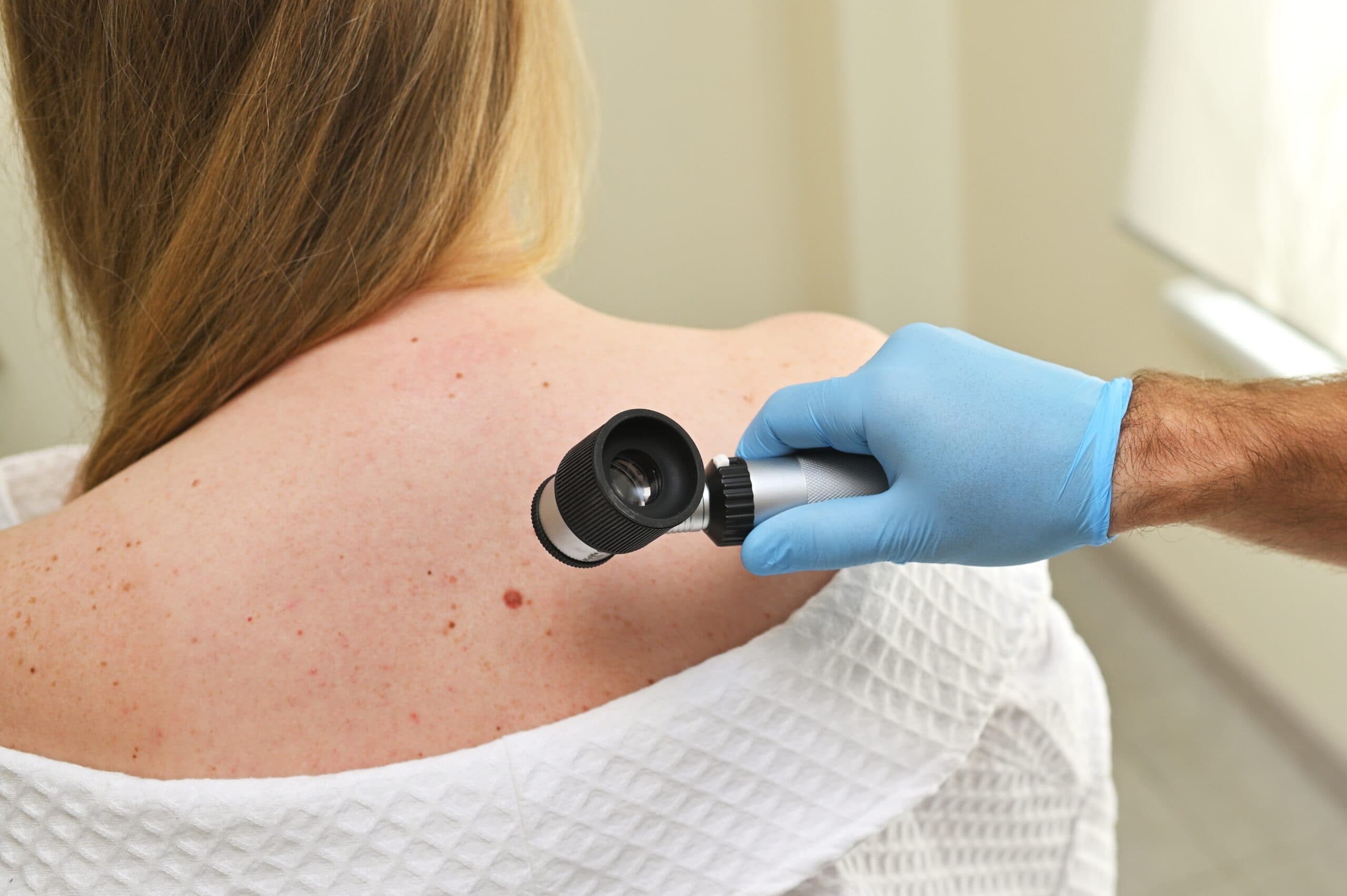Most people have moles — small clusters of pigmented cells that appear as brown, black, or flesh-colored spots on the skin. While the majority are harmless, certain changes can signal something more serious, including the early stages of skin cancer.
Knowing what’s normal and what’s not can help you take control of your skin health. Regular self-checks and timely dermatologist visits are essential for detecting problems early, when they’re most treatable.
Here are five signs it’s time to schedule a professional skin evaluation for a mole.
1. A Mole That Changes in Size, Shape, or Color
Moles that evolve over time are one of the most important warning signs for melanoma — the most dangerous type of skin cancer.
What to watch for:
- Growth — A mole that gets larger or thicker.
- Shape — Edges that become irregular, scalloped, or blurred.
- Color — Uneven tones, such as mixtures of brown, black, red, or blue.
Even subtle changes can indicate that skin cells are growing abnormally. Dermatologists use the ABCDE rule to evaluate suspicious moles:
- A — Asymmetry: One half doesn’t match the other.
- B — Border: Edges are uneven, jagged, or poorly defined.
- C — Color: Multiple shades or unusual pigmentation.
- D — Diameter: Larger than 6 millimeters (about the size of a pencil eraser).
- E — Evolving: Any change in appearance or new symptoms, such as itching or bleeding.
If you notice one or more of these features, don’t wait for your next annual check — schedule an exam as soon as possible.
2. A New Mole That Appears in Adulthood
Most people develop the majority of their moles in childhood or adolescence. By adulthood, the number of moles typically stabilizes.
That’s why a new mole that appears after age 30 should be examined by a dermatologist. While it may still be benign, new growths later in life carry a higher risk of being atypical or cancerous.
A professional evaluation can determine whether the mole is harmless or needs further testing, such as a biopsy.
3. A Mole That Itches, Bleeds, or Crusts
Moles should not cause discomfort. If a mole becomes itchy, tender, painful, or begins to bleed or scab, it could be a sign of irritation, infection, or — in rare cases — malignant change.
Possible causes include:
- Friction from clothing, shaving, or jewelry.
- Infection in or around the mole.
- Inflammation due to immune response.
- Skin cancer developing within the mole.
Even if irritation seems minor, it’s best to let a dermatologist rule out more serious conditions. Persistent bleeding or oozing are particularly important warning signs.
4. A Mole That Looks Different from the Others
Most people have a “signature” type of mole — similar in size, shape, and color across the body. A mole that stands out as different from the rest (sometimes called the “ugly duckling” sign) may deserve closer attention.
This doesn’t necessarily mean it’s dangerous, but it’s worth noting any mole that:
- Has a distinctly darker or lighter tone than your others.
- Has irregular or blurry borders.
- Is isolated in an area without similar moles.
Because melanoma can arise from new or changing moles, identifying an “outlier” can be an important early detection clue.
5. A Mole That Doesn’t Heal or Recurs After Removal
A mole that doesn’t heal properly, continues to ooze, or reappears after removal should always be examined by a dermatologist.
While recurrence doesn’t automatically mean cancer, it can signal that abnormal cells remain beneath the surface. In rare cases, a regrown mole could indicate a deeper or more aggressive lesion requiring further testing.
If you’ve had a mole removed and notice any regrowth, discoloration, or changes in texture, schedule a follow-up as soon as possible.
Bonus: Moles in Hard-to-See Areas
Some areas of the body — like the scalp, back, or behind the ears — are difficult to monitor on your own. Moles in these locations can easily go unnoticed until changes are advanced.
Helpful tips for self-monitoring:
- Use a handheld mirror or ask a partner to help check your back and scalp.
- Take photos of moles to track changes over time.
- Schedule annual skin exams with a dermatologist for full-body assessments.
Regular monitoring and documentation are some of the best tools for early detection.
What to Expect During a Dermatologist Visit
If you visit a dermatologist for mole evaluation, you can expect a thorough and painless exam. The provider will:
- Examine your skin from head to toe under bright lighting.
- Use a dermatoscope (a magnifying tool with light) to assess mole structure and pigmentation.
- Identify any moles that look atypical or suspicious.
- Recommend monitoring, imaging, or biopsy if needed.
A biopsy — if required — is a quick, minimally invasive procedure performed under local anesthesia. It allows the dermatologist to analyze skin cells under a microscope for an accurate diagnosis.
Protecting Your Skin Year-Round
Early detection is vital, but prevention is just as important. Protect your skin by:
- Wearing broad-spectrum sunscreen (SPF 30+) daily.
- Reapplying every two hours, especially after swimming or sweating.
- Wearing protective clothing, wide-brimmed hats, and UV-blocking sunglasses.
- Avoiding tanning beds and excessive sun exposure.
- Performing monthly self-checks to spot new or changing moles.
These small habits can greatly reduce your risk of skin damage and melanoma over time.
When in Doubt, Get It Checked
Moles are common, but skin cancer is, too — and it’s highly treatable when caught early. If you notice a mole that’s changing, painful, or simply doesn’t look right, don’t ignore it. A quick exam can provide peace of mind and, in some cases, save your life.
At Pensacola Dermatology, our board-certified dermatologists provide expert mole evaluations, skin cancer screenings, and advanced treatment options to help you stay healthy and protected.
Request your appointment today for a professional skin exam and take a proactive step toward lifelong skin health.
